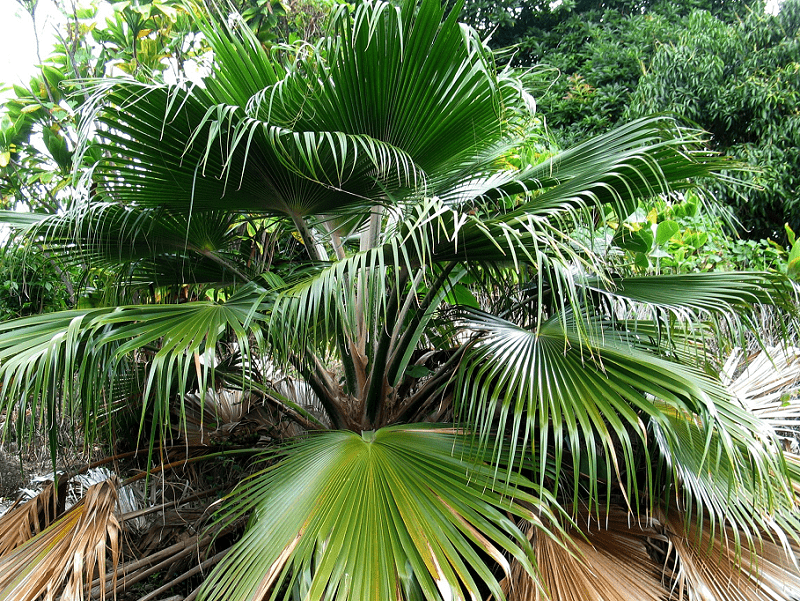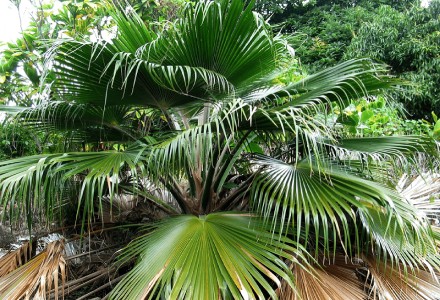
Pritcardia Facts
- Pritcardia names a genus consisting of 40 rather amazing species of palms endemic to a specific number of tropical Pacific islands.
- While the IUCN does not currently have a listing for any of them, each of the known species of Pritcardia appears to also be either endangered or threatened.
- Climate change and habitat loss also form the greatest threats to the existence of this remarkable genus, as unfortunately is also the case with many other species.
- The genus also bears the name of William Thomas Pritchard. He was a rather well-known British consul at Fiji during the 19th century.
Related Articles
Bristlecone Pine English Oak Rainbow Eucalyptus
Pritcardia Physical Description
All species of the Pritcardia that scientists know of represent palm trees with single trunks. Some attain a height of as much as 130 ft (39.6 m).
Those varieties endemic to the Islands of Hawaii average between 25-60 ft (7.6-18.3 m) in height. This represents a medium-sized palm.
The leaves grow few in number, yet large and rather fan-shaped. The colors of the leaves vary by species, but those of a few types of Pritcardia are a silvery color on the underside.
Flowers and subsequent fruit grow in large clusters at the end of long stems. The fruits of each variety of the palm are approximately 2 in (5 cm) long.
Some varieties also produce round fruit while others grow more oval-shaped fruit.
- Kingdom: Plantae
- Phylum: Angiosperms
- Class: Monocots
- Order: Arecales
- Family: Arecaceae
- Genus: Pritcaridia
Photographer: Daderot Public Domain Image
Pritcardia Distribution and Habitat
Nineteen recognized varieties of Pritcardia appear native only to the Hawaiian Islands.
In fact, each of the Islands also serves as home to at least one member of the genus that exists nowhere else.
The remaining varieties also appear to be endemic only to individual islands in Samoa, Fiji, Tonga, and the Tuamotus.
The native habitat of each type also varies greatly. Some prefer only in high altitude wet forests while others are native only to either coastal regions or cliff terraces.
Species Sharing Its Range
Happy Face Spider Hawaiian White Hibiscus Acacia koa
Check out our other articles on 5 Mesmerizing Marvels of Italy, Snowshoe Hare, Mount Kinabalu, Hibiscus Harlequin Bug, Lau Banded Iguana, Guinan cock-of-the-rock

